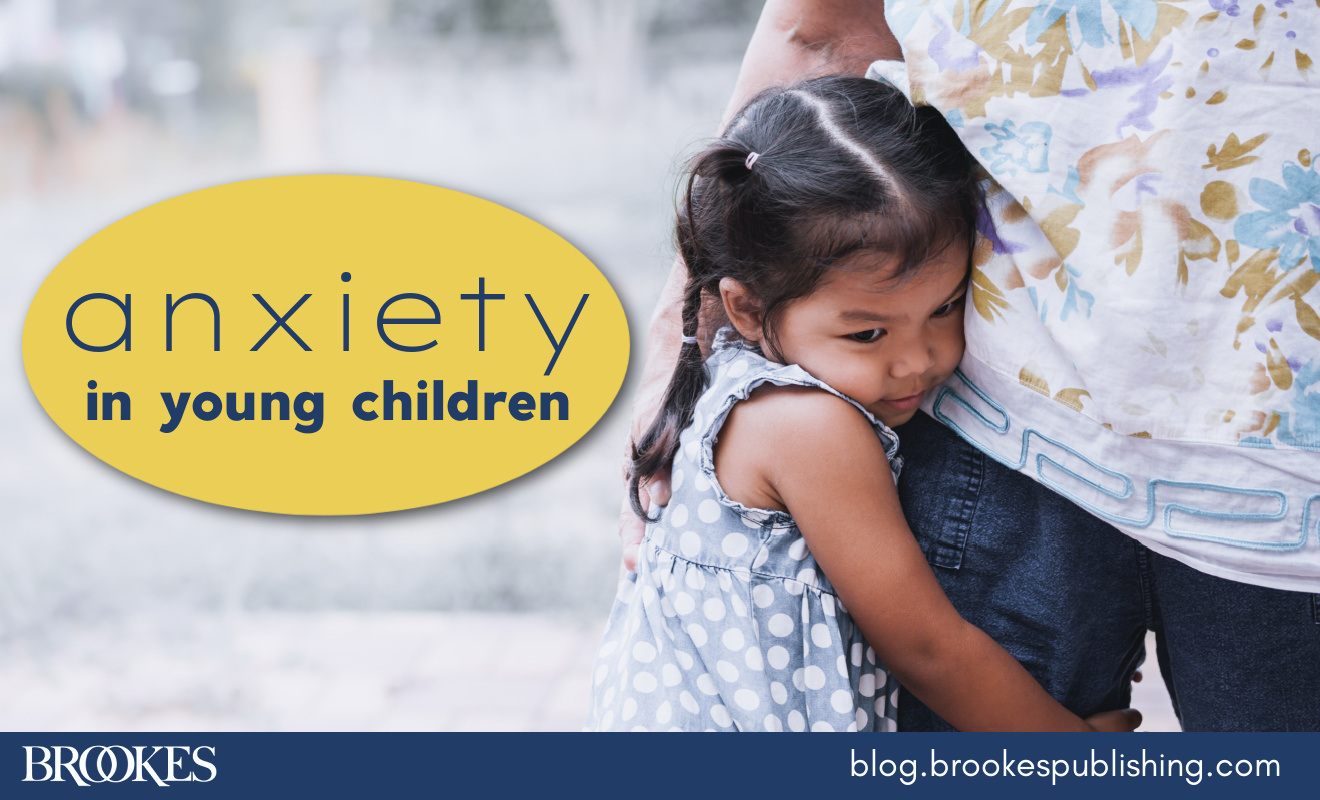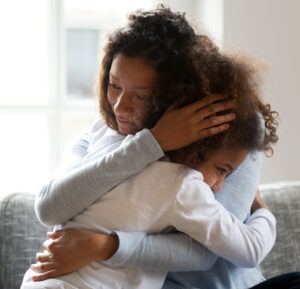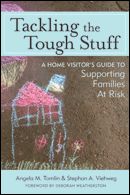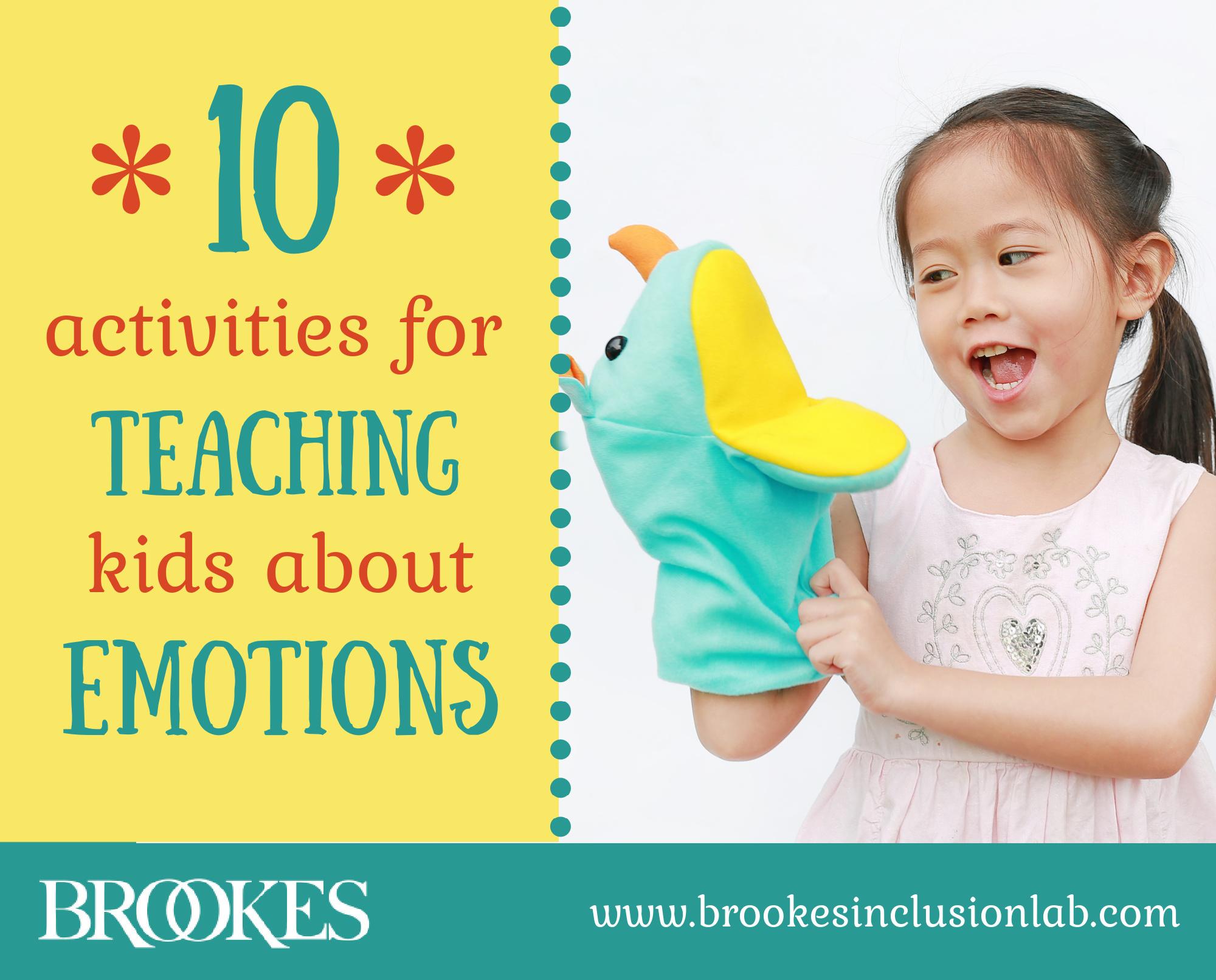8 Things Caregivers Can Do to Ease Young Children’s Anxiety
February 16, 2023
Young children who frequently experience anxious feelings need patient, caring, and knowledgeable adults to provide them with effective support. Adapted from the home visiting guidebook Tackling the Tough Stuff by Angela Tomlin and Stephan A. Viehweg, the tips in today’s blog post can help. Share these ideas with the parents of young children—and adapt them for any setting to help kids work through their fears and worries.
Prepare children for events they might find scary. Cautious young children will do better with new things when given plenty of advance preparation. Use books, TV programs when appropriate, or other indirect ways to get a child used to a feared object, person, or situation. For example, a visit to the doctor may be anxiety-provoking because it involves close contact with a person who is not seen frequently and may have given them shots in the past. To help a child prepare for a doctor visit, read books and watch children’s programs about doctors to gain familiarity. Provide a doctor’s kit and encourage the child to pretend to give the caregiver, doll, or stuffed animal a checkup. Take the child to the doctor’s office for a visit that does not involve a checkup. It might also help to see an older sibling successfully complete a doctor’s visit.
Encourage children’s curiosity and play. Specific, actively encouraging statements are more helpful for shy and anxious children than just warm statements. Encouraging statements provide an actual suggestion about what to do (e.g., “You can sit and play in the sandbox with that little girl.”) instead of simply offering words of general praise, like “You’re doing great!”*

Teach children to recognize and name feelings.
Children who have difficulty recognizing basic emotions may be more likely to incorrectly interpret another person’s facial expression and emotion as negative, increasing their anxiety. Help children identify feelings by pointing out emotional states in other people (“That boy’s mommy had to go in the other room and he was worried about where she was.”) and naming emotional states in the child (“You are so excited to go to the park! Tell your feet to be calm so they can go into their shoes so we can leave.”)

 Give support and comfort in new situations. For anxious children to feel comfortable enough to interact with other people, approach new toys, or explore new situations, caregivers should provide support as the child warms up or comfort when the child is too dysregulated by fear. Caregivers who try to push the child to interact too soon, insist on interactions with new people, or leave the child too quickly in new situations will find that these methods don’t work–and may even make things worse.
Give support and comfort in new situations. For anxious children to feel comfortable enough to interact with other people, approach new toys, or explore new situations, caregivers should provide support as the child warms up or comfort when the child is too dysregulated by fear. Caregivers who try to push the child to interact too soon, insist on interactions with new people, or leave the child too quickly in new situations will find that these methods don’t work–and may even make things worse. For young children who experience anxious feelings around interactions with others, try coaching them in low-contact (but still appropriate) methods of interacting. For example, teach a child to smile and wave to unfamiliar adults If making eye contact or speaking is too hard. A child who does not want to give a kiss or hug to a family member could give a high five or fist bump instead.
For young children who experience anxious feelings around interactions with others, try coaching them in low-contact (but still appropriate) methods of interacting. For example, teach a child to smile and wave to unfamiliar adults If making eye contact or speaking is too hard. A child who does not want to give a kiss or hug to a family member could give a high five or fist bump instead. Select age-appropriate activities. Be sure that young children are engaged with activities that are appropriate for their developmental level and don’t contain frightening imagery that can increase their anxiety. For example, shield young children from scary movies and video games used by adults or older children in the home.
Select age-appropriate activities. Be sure that young children are engaged with activities that are appropriate for their developmental level and don’t contain frightening imagery that can increase their anxiety. For example, shield young children from scary movies and video games used by adults or older children in the home. Red Flags for Possible Anxiety Disorder
Red Flags for Possible Anxiety Disorder



Write a Comment
Your email address will not be published. Required fields are marked *
Post a Comment